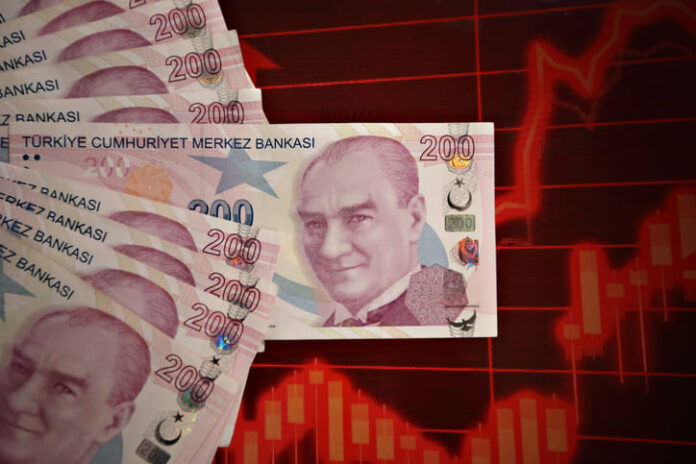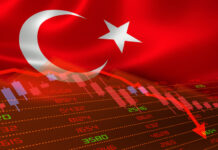The article discusses the Turkish lira’s decline, driven by inflation, capital outflows, and economic challenges. Predicting the USD/TRY exchange rate to exceed 52 by 2025, it highlights the need for sustainable policies. Economic theories explain why Turkey’s current approach may worsen inflationary pressures and currency devaluation.
In recent times, the impact of global financial developments on the Turkish economy has been intensely felt. While major central banks such as the European Central Bank (ECB) and the Federal Reserve (FED) are adjusting their interest rate policies, expectations for the Turkish exchange rate and inflation are driven by different dynamics. In this context, not only global developments but also Turkey’s internal dynamics and structural problems must be considered.
This article evaluates the current and future pressures on the exchange rate from a general economic perspective and highlights potential risks in the economy.
General Perspective: Inflation, Exchange Rate, and Capital Movements in Turkey
Recent developments in the Turkish economy show that inflation and the exchange rate are on a consistent upward trend. The low-income elasticity of many products indicates that demand does not decrease as inflation rises. This phenomenon continues to fuel the inflationary cycle in Turkey, where prices rise, demand remains steady, and as a result, the exchange rate keeps increasing.
Historical examples of such situations can be observed in countries like Brazil (1980s-early1990s), Argentina (Late 1980s) and Venezuela (Mid-2010s), where similar inflationary spirals led to uncontrollable exchange rate increases, causing severe damage to their economies. Turkey is currently at the cusp of experiencing a similar cycle.
Given the current economic data, the Central Bank’s efforts to intervene in the exchange rate will not be sustainable for long. With limited foreign exchange reserves, it is not possible to maintain prolonged pressure on the exchange rate through reserves. Although the average exchange rate expectation for the end of 2025 is around 42 TRY, reliable market data providers estimate it to rise to 52 TRY. Even though Turkey’s CDS (Credit Default Swap) rates remain low, upward revisions in exchange rate expectations are noteworthy.
When examining Turkey’s growth expectations, the Medium-Term Program (MTP) targets a 4% growth rate for 2025. However, this target seems unrealistic given the current growth figures. While growth was recorded at 5.3% in the first quarter of 2024 ,it dropped to 2.5% in the second quarter, indicating a potential for negative growth. With these trends, it is clear that inflationary policies will continue, as they are essential for sustaining growth.
The stagnation in industrial production, combined with ongoing capital outflows, indicates that the Turkish economy is contracting. The revision of export expectations under the MTP, pulling back the forecast by $13 billion, may be a sign of weakness caused by exchange rate pressures.
Capital Movements and Their Effects on the Exchange Rate
Additionally, in the last two months, significant foreign capital outflows have been observed in both the stock market and debt instruments. According to data from the beginning of the summer 2024, nearly $3 billion of foreign capital has exited the market, and this trend appears to be continuing. The withdrawal of foreign investors reduces liquidity in Turkish markets, weakening the protective effect on the TRY. These capital outflows deepen the contraction in financial markets, which in turn increases demand for foreign currency and leads to a rise in the USD’s value against the TRY. This contraction, when measured with market performance, signals a decline in confidence in Turkey’s financial system and further exacerbates upward pressure on the exchange rate.
Turkey and the Exchange Rate in Light of Economic Theories
To fully grasp the current dynamics of Turkey’s exchange rate, it is helpful to look at some fundamental economic theories. These theories provide a deeper understanding of the structural challenges and exchange rate expectations in the country.
Inflation Expectations; Over the past three years, high inflation expectations and political uncertainty have increased the risk of the TRY depreciating. Even if U.S. interest rates fall, the high inflation expectations and uncertainty in Turkey weaken confidence in the TRY, increasing demand for foreign currency and driving up the exchange rate. Periodic increases in Turkey’s risk premium, as reflected in CDS rates, continue to put upward pressure on the exchange rate.
Mundell-Fleming Model; This model suggests that a decrease in U.S. interest rates could encourage capital inflows into developing economies. However, in a country like Turkey, where political uncertainty and high interest rates persist, these inflows may remain limited. While strict monetary policies aim to curb outflows, capital flight remains a risk. Policies aimed at suppressing the exchange rate can fuel domestic demand, potentially leading to further upward pressure on the exchange rate.
Balassa-Samuelson Hypothesis; In developing countries, productivity gains tend to occur more slowly in non-tradable sectors (such as services). In Turkey, the slow productivity growth in non-tradable sectors adds inflationary pressure, which in turn puts pressure on the exchange rate. Even if U.S.
interest rates decrease, structural issues in Turkey’s economy may continue to drive the exchange rate upwards. The slower productivity growth in the services sector may trigger higher price levels, increasing the demand for foreign currency.
Real Interest Rates; As long as real interest rates in Turkey remain lower than those in the U.S., demand for foreign currency may surpass demand for the TRY. In a high-inflation environment, low real interest rates make foreign currency more attractive, putting upward pressure on the USD/TRY exchange rate. With discussions of rate cuts resurfacing in Turkey, this could further weaken the TRY and fuel greater demand for foreign currency.
Conclusion: 2025 Projections and the Exchange Rate
Inflation and upward pressure on the exchange rate are expected to persist until 2025 in the Turkish economy. The growth target of 4% and the 17,5% inflation expectation stated in the Medium-Term Program appear misaligned with current economic dynamics. Given the ongoing inflationary pressures and rising exchange rates, the USD/TRY rate could exceed 52 by the end of 2025.
Considering the structural challenges in the Turkish economy, capital outflows, and the pressures on the exchange rate, it is likely that the upward trend in the exchange rate will continue in the coming years. In light of economic theories and current data, Turkey will need to implement more robust and sustainable policies to break this cycle.
About the Author
 Oguz Senbayrak is a Senior Consultant, specializing in market liquidity and interest rate risk management. With a background in economics and an MBA in progress, he has extensive experience in financial risk management, derivatives, and speculative market behavior, making him an expert on inflation dynamics and consumer behavior in emerging markets.
Oguz Senbayrak is a Senior Consultant, specializing in market liquidity and interest rate risk management. With a background in economics and an MBA in progress, he has extensive experience in financial risk management, derivatives, and speculative market behavior, making him an expert on inflation dynamics and consumer behavior in emerging markets.



































































